Beast ant – a lost ant-wasp intermediate

In the recent paper “†Camelosphecia gen. nov., lost ant-wasp intermediates from the mid-Cretaceous (Hymenoptera, Formicoidea)” published in ZooKeys, Brendon Boudinot, Vincent Perrichot, and Júlio C. M. Chaul discovered a lost ant-wasp intermediate (genus †Camelosphecia) which displays several plesiomorphies and puts †Camelosphecia and †Camelomecia as an extinct sister group to the Formicidae. Here, Brendon highlights the main points and shares pictures.
An Interview compiled Phil Hönle, Patrick Krapf, and Alice Laciny
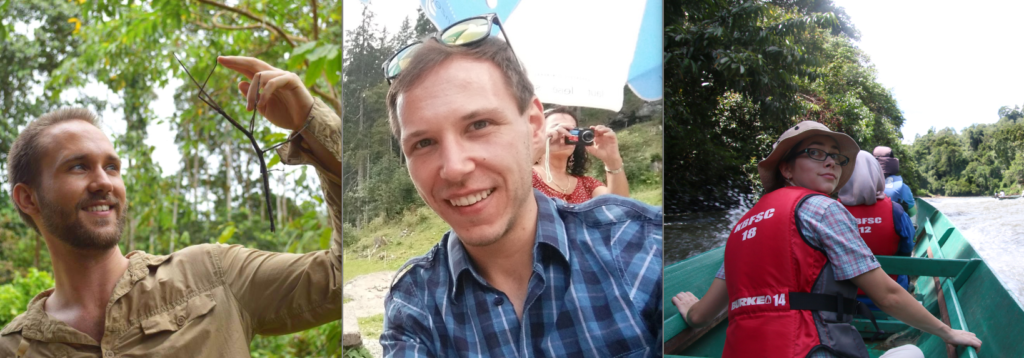
MNB: Could you tell us a bit about yourself?
BB: I am an Alexander von Humboldt Research Fellow at the Phyletisches Museum in Jena, Germany. I completed my Ph. D. this year at the University of California, Davis, under the guidance of Phil Ward. My research interests are the origin and evolution of complex phenotypic systems, especially through the lens of taxonomy and phylogenetic systematics. At the Phyletisches Museum, I am studying the biomechanical evolution of ant locomotion through comparative and evolutionary anatomy.
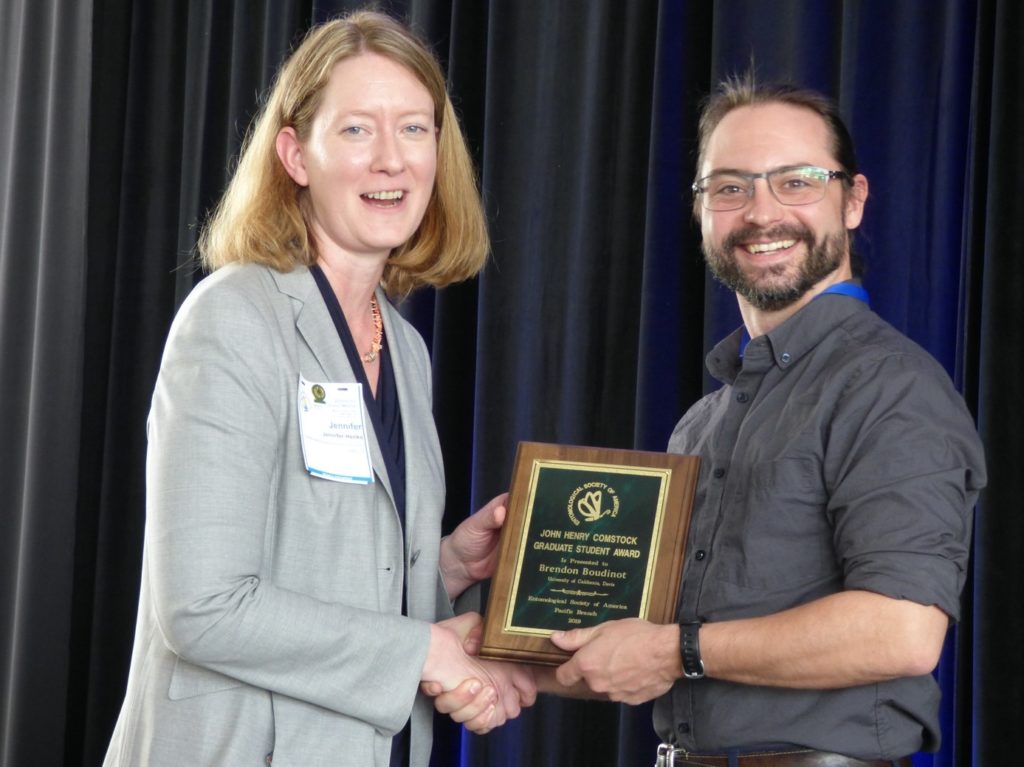
MNB: Could you briefly outline the research you published in layman’s terms?
BB: In this work, my collaborators and I describe a new genus of extinct ants, based on both sexes, from mid-Cretaceous amber, and which we colloquially name “beast ants” because of their ferocious and strange morphology. Based on some of my dissertation research, currently under review at Systematic Biology, we found that these fossils are the most distant relatives of the living ants known so far. These exceptionally bizarre ant-wasps display a series of unique features, which are associated with digging and predation, specifically: massive and muscular fore femora, thick and fluted digging setae on the fore tarsi, and wickedly armed mouthparts. The females have huge compound eyes, elongated and many-toothed mandibles, thick traction hairs on the labrum, and an enlarged mandible-cranium articulation which allows the mandibles to have a very wide gape, as determined by comparison to living ants and wasps. The modified articulation is one of a series of features shared with living ants and the more ant-like extinct lineages, such as †Sphecomyrma, that has allowed the ants to dominate the surfaces of terrestrial ecosystems. A number of other features are listed and explained in detail in a new diagnosis of the ant superfamily. In this work, we also provide a taxonomic synopsis of and diagnostic key to the known Mesozoic ants preserved in amber. Stay tuned for an extended treatment of the evolution of the ants and aculeate wasps!

A dorsolateral oblique view of a female †Camelosphecia. Her massive eyes and fore femora are easily visible here (© Boudinet et al. 2020). 
The holotype female of †Camelosphecia fossor, from a ventrolateral oblique viewpoint (© Boudinet et al. 2020). 
A detail shot of the holotype female of †Camelosphecia fossor, showing the digging hairs (“psammochaetae”) on the medial surface of the second tarsomere (© Boudinet et al. 2020). 
A closer view of the female’s head. Her face has an unusual broad anterior concavity, and many of the key features defining the genus can be seen here. Note the far anteriorly projecting anterior clypeal margin marked in cyan, and the enlarged cranial condyle circled in magenta (© Boudinet et al. 2020).
MNB: What is the take-home message of your work?
BB: Ants were far more diverse in terms of form and function before the end-Cretaceous mass extinction than we had previously appreciated. Despite this diversity, or rather because of it, we have been able to discover some of the fundamental features of the ants, namely adaptations for running and walking, load bearing, increased mandibular gape and capacity for grip, and a set of other functions which we address in our forthcoming work.
MNB: What was your motivation for this study?
BB: This study was conducted as part of a much larger research project on the morphological evolution of the ants in the context of the total clade of the Aculeata. Although this broader study includes over a dozen undescribed Mesozoic aculeate genera, we were motivated to define †Camelosphecia because of its incredible strangeness. It was this strangeness, in fact, which spawned the larger study: Are †Camelosphecia ants, or are they aberrant Aculeata who happen to resemble ants? To solve this problem, we developed a dataset of over 500 morphological characters for over 500 living and extinct Aculeata and relatives which we jointly analyzed with molecular data. Hopefully, the larger study will be out soon!
MNB: What was the biggest obstacle you had to overcome in this project?
BB: The most intense obstacle to overcome in this project was simply solving the question of whether or not †Camelosphecia are ants! It took years of work to generate and analyze the dataset, but at this point the results are clear. These beasts are indeed ants and join the Mesozoic menagerie alongside the “hell ants” (†Haidomyrmecinae) and “iron-maiden ants” (†Zigrasimeciinae). We absolutely look forward to new discoveries from this lost fauna!
MNB: We strongly agree!
MNB: Do you have any tips for others who are interested in doing related research?
BB: Study morphological function! Function explains form, and form is the key to integrating fossils into evolutionary analysis. There is much to learn about the functional morphology of ants and other wasps, and many questions remain open if not simply unasked. Developmental patterning and evolutionary transformation also explain form, of course, so comparative study of metamorphosis and phylogenetic models for morphology will also be key for unlocking the Mesozoic mysteries of ant origin and evolution.
MNB: Where do you see the future for this particular field of ant research?
BB: Undoubtedly, the future of ant morphology and evolution will be digital. We already have—and are gaining ever more—genomic data, and very soon there will be an unbelievable flood of µ-CT data for ants via the AntScan project (abstract here: https://www.iussi2018.com/node/1715). Museums are absolutely critical, and the richness of the specimens they house will become increasingly realized. In the coming years, we will see the manifestation of the renaissance of insect morphology, and I hope the complete integration of genomics and phenomics for modeling the evolutionary history of ants and ultimately, by extension to other animal groups, ourselves. I must add that we should expect a lot of strange and important fossils to be discovered and described by our great paleomyrmecological colleagues.
MNB: Thank you for this nice interview.

A fluorescent photomontage of the female’s mouthpart armature, showing clearly the paired teeth on the anterior clypeal margin, the massive traction hairs (“chaetae”) covering the labrum, and the long, bowed, and wickedly toothed mandibles. Also note that the antennal sockets are directed laterally. More on this in forthcoming work! (© Boudinet et al. 2020). 
The holotype male of †Camelosphecia venator. In contrast to the females, the males have puny, twig-like legs, shorter and weaker pronota, and smaller albeit still large compound eyes. They are easily recognized as †Camelosphecia by their long, bowed, and multidentate mandibles, as observed in the female (© Boudinet et al. 2020). 
The head of †Camelosphecia venator. These males are remarkable in many ways, not the least of which is that their compound eyes (“ce”) achieve binocular vision by protruding beyond the clypeus (“cl”)! The characteristic mandibles are also clearly visible here. Unfortunately, the male genitalia were lost during the preparation of this specimen, so we hope that more intact specimens may be found (© Boudinet et al. 2020).

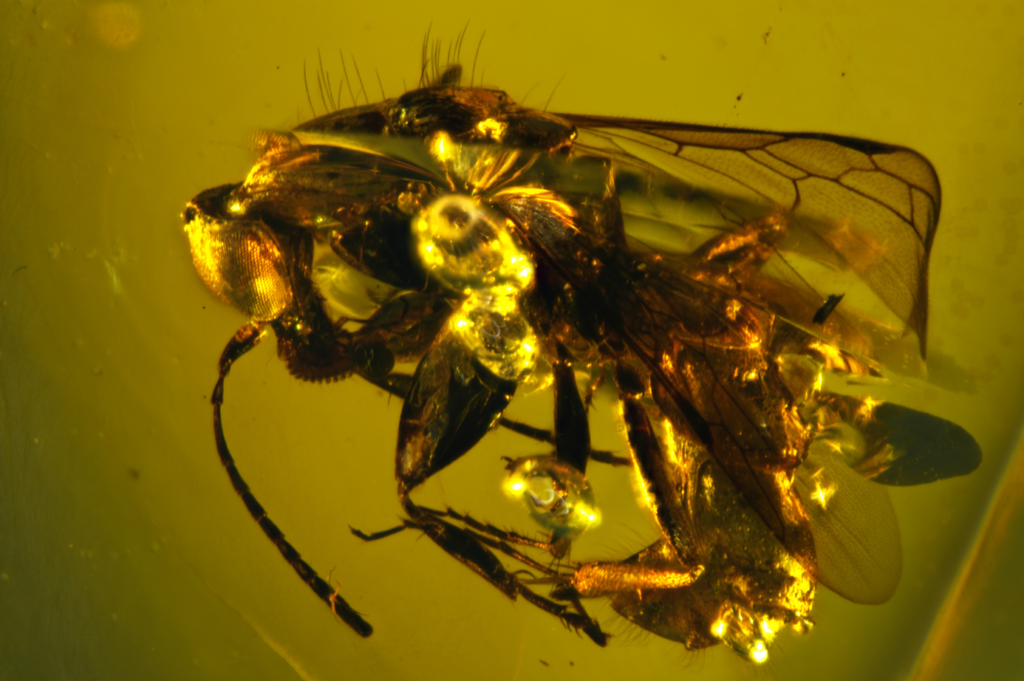


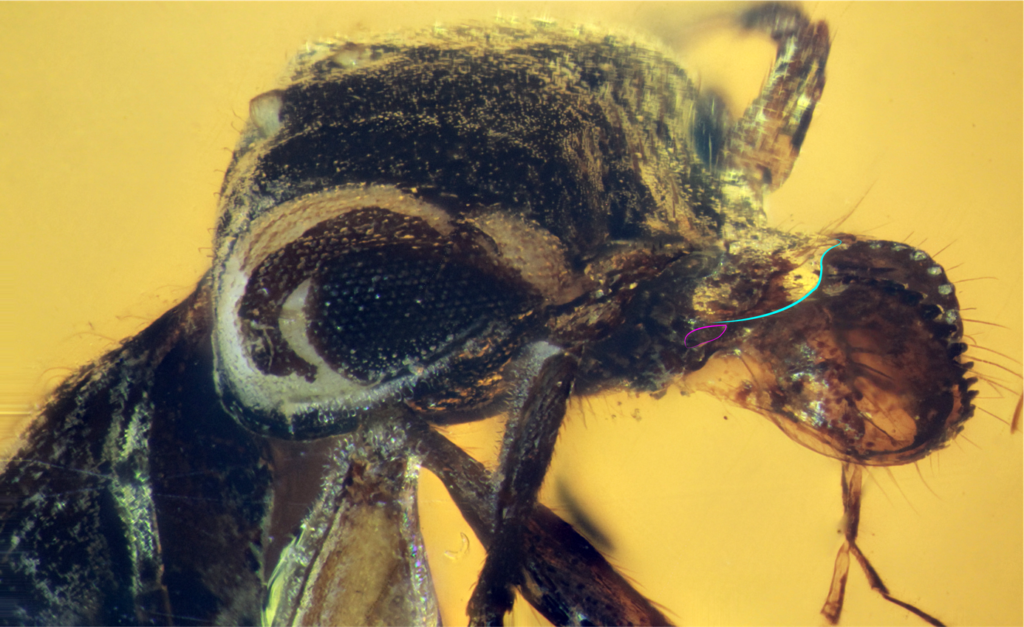
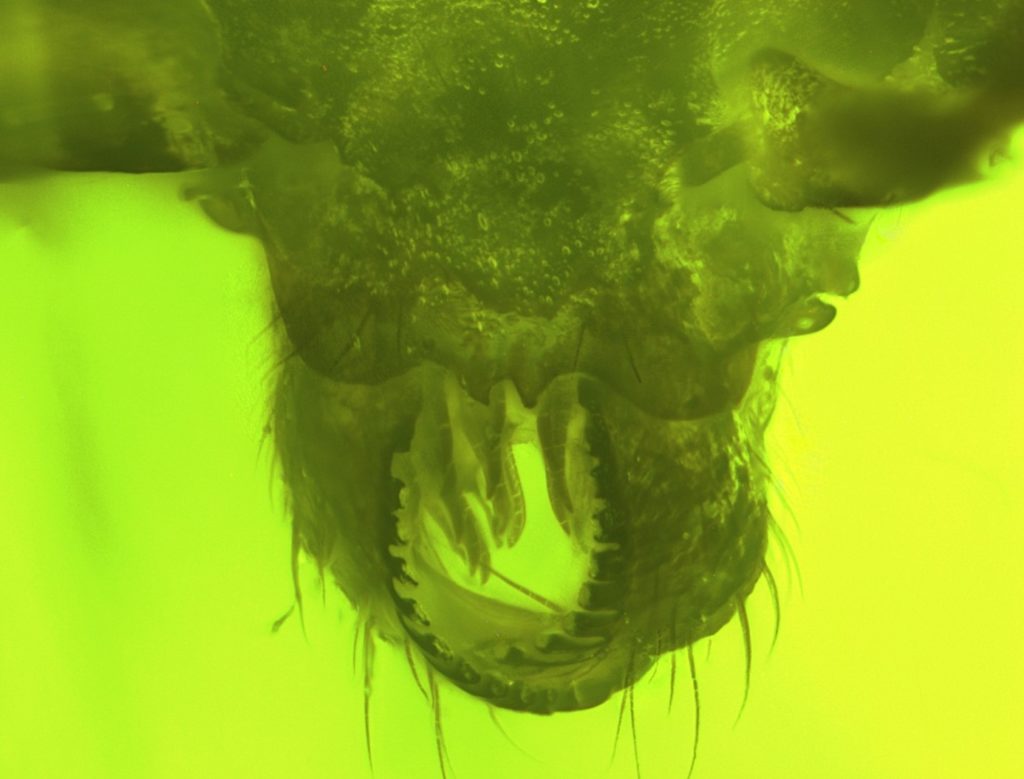






A very interesting article. Can’t wait to read more….